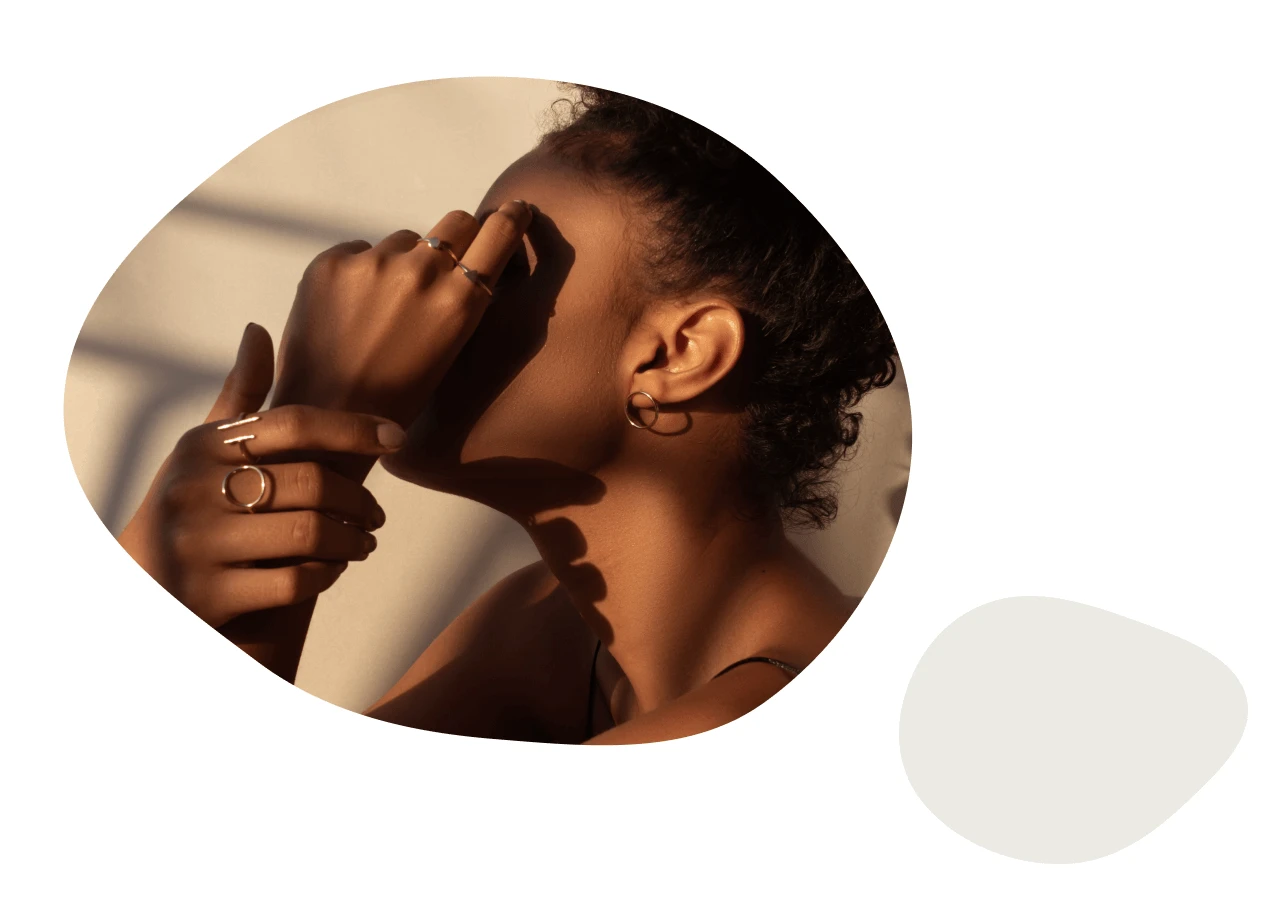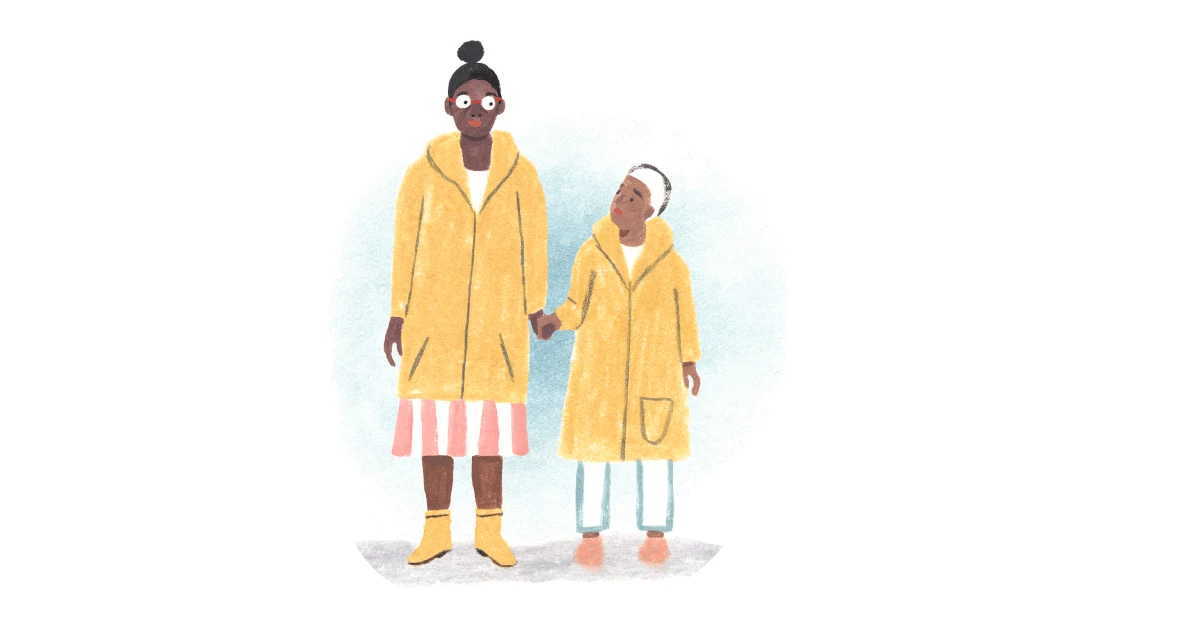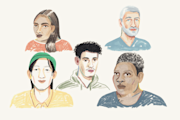Body dysmorphia, or body dysmorphic disorder (BDD), is a condition that causes us to worry excessively and constantly about flaws in our physical appearance.
Of course, many of us may have something we don’t like about our bodies. And, it can be hard not to compare ourselves to photos on Instagram, or in magazines, or on TV.
We’ve all probably done it at some point.
Even celebrities who we might view as “flawless” often have details about their physical appearance they'd like to change or “fix.”
Body dysmorphic disorder (BDD) is a condition that causes us to worry excessively and constantly about flaws in our physical appearance.
When these thought patterns turn into something that interfere with our daily lives, it suggests we may be experiencing something more serious like body dysmorphic disorder.
We’ve put together everything you need to know about BDD—from the definition of body dysmorphic disorder, to the symptoms of BDD, and, finally, BDD treatment options.

Is BDD a serious mental illness?
Body dysmorphic disorder is a serious mental illness.
The American Psychiatry Association (APA) Diagnostic and Statistical Manual of Mental Disorders, fifth edition (DSM-5) classifies body dysmorphic disorder in the category called "Obsessive-Compulsive and Related Disorders."
Someone with BDD can’t stop the loop of negative thoughts.
This category of disorders also contains OCD, trichotillomania (hair-pulling disorder), excoriation (skin-picking) disorder, and hoarding disorder.
Symptoms of BDD
As defined in the DSM-5, BDD is a “preoccupation with one or more perceived defects or flaws in physical appearance that are not observable or appear slight to others.”
Additionally, the APA’s diagnostic criteria specifies that this preoccupation “causes clinically significant distress or impairment in social, occupational, or other areas of functioning.”
Symptoms of BDD are often seen in teens during late adolescence, though they can also start later in life.
Someone with BDD can’t stop the loop of negative thoughts.
It impacts their day so much that it can lead to anxiety in social situations, at work, or in their home life.
According to Johns Hopkins Medicine, symptoms of BDD include:
Constantly checking yourself in the mirror
Avoiding mirrors
Trying to hide your body part under a hat, scarf, or makeup
Constantly exercising or grooming
Constantly comparing yourself with others
Always asking other people whether you look OK
Not believing other people when they say you look fine
Avoiding social activities
Not going out of the house, especially in the daytime
Seeing many healthcare providers about your appearance
Having unnecessary plastic surgeries
Picking at your skin with fingers or tweezers
Feeling anxious, depressed, and ashamed
Thinking of suicide
Sometimes body dysmorphia can cause someone to avoid socializing altogether because the person fears being seen in public with their self-identified flaw.
For instance, they might instead opt to stay home and pick at their skin or tediously apply and reapply contouring makeup to enhance or hide the perceived flaw.
A well-meaning person might tell their friend with BDD, “You’re so pretty/handsome/fit!”
However, it’s important to understand that these types of statements don’t cause people with body dysmorphic disorder to feel better.
Body dysmorphic disorder has little to do with how a person actually looks.
People whose bodies fit the modern standards of beauty can still suffer from BDD (including celebrities like Miley Cyrus, Robert Pattinson, and Uma Thurman), as the disorder is about their own mindset around perceived defects. What they see is “ugly” or a “flaw”—despite any amount of compliments or arguments to the contrary.
Body dysmorphic disorder has little to do with how a person actually looks.
“What I think is useful to remember is that the diagnosis of body dysmorphic disorder has a lot of similarities to obsessive compulsive disorder (OCD),” says therapist Camila de Onís, LCSW, who treats people with BDD.
“So, in this sense, the symptoms of the diagnosis look like repetitive behaviors that cause a lot of anxiety and are difficult to stop—like frequent time spent analyzing perceived flaws, pulling or picking at skin, being unable to objectively recognize one’s own body size and shape,” she explains.
“Obsessive and consuming thoughts can accompany these behaviors,” de Onís says. “And this is often paired with intense comparison of other bodies and the feeling that they are seen far differently than they objectively appear.”

Comorbidities (the presence of one or more additional conditions co-occurring with a primary condition) are often found alongside body dysmorphia.
Some studies have found approximately one-third of people with BDD also have a comorbid eating disorder.
Research has also found that people with BDD are likely to have comorbid social anxiety.
Studies have found that people with BDD have high rates of suicidal ideation, suicide attempts, and completed suicide. Available research shows approximately 80% of people with BDD experienced suicidal ideation at some point in their lives and 24% to 28% have attempted suicide.
What causes body dysmorphic disorder?
BDD is most likely caused by a combination of environmental, psychological, and biological factors, according to Johns Hopkins Medicine. Family history and bullying can also play a significant role in creating or exacerbating the disorder.
The specific types of content people consume on social media impact how they view themselves.
According to de Onís, diet culture contributes too.
“Skincare and beauty products often use normative beauty standards to emphasize thin, white bodies,” de Onís says.
“Implicit in this messaging is a fat phobic and often racist ideal of what is seen as attractive,” she explains. "In a related way, cosmetic body modifications are marketed to solve and satisfy perceived body problems.”
How many Americans have BDD?
According to the International OCD foundation, 1.5%-3% of Americans suffer from BDD.
That’s about 5 million to 10 million people in the United States—however that number may be higher in reality, as many people with BDD feel embarrassed or ashamed, and may not mention their concerns to anyone including their mental health providers.
While BDD can affect both men and women, the symptoms can manifest differently.
Others may not recognize the harm their thought patterns may be creating and brush it off as behavior to take care of their appearance.
Symptoms of BDD are often seen in teens during late adolescence, though they can also start later in life.
“The scariest trend is age of onset,” says behavioral health therapist Dr. Andrea L. Barbian, LCMHC, NCC. “While the average age of onset had previously been ages 16-17, typical onset is now being seen around ages 12-13, according to the APA.”
“This means young girls are receiving these messages before they are fully developed or have gone through puberty, which exacerbates unhealthy thinking patterns and expectations for their own bodies,” Barbian points out.
Body dysmorphic disorder affects both men and women
According to Johns Hopkins Medicine, men and women are equally affected by BDD. (No data seems to exist yet for how often body dysmorphic disorder affects nonbinary or trans people.)

Some men are speaking out online about BDD under the safety of anonymity.
One user on Reddit describes his experience with body dysmorphic disorder from age 15-17 and shares, “I took at least 100 pictures of my face everyday [sic]. I looked in the mirror at least 3 times an hour. I fixated on this one point of my face (the line between the nose and the mouth). And I ended up dropping out of college because of it.”
Another male Reddit user describes body dysmorphic disorder: is “I could make a list of maybe 100+ things wrong with me and that I'd like to change, but I'd struggle to list one thing that I like about myself.” He also says, “I have practically no social life, and I truly hate myself.”
So, while BDD can affect both men and women, the symptoms can manifest differently.
In one study from the 1990s, women were found to be more likely to be concerned with their weight and their skin, which they were likely to camouflage with makeup.
Men, on the other hand, were more likely to have concerns with their muscles and size, genital appearance, and hair thinning, which they were likely to try to camouflage with a hat.
Muscle dysmorphia is the belief that one’s body is not muscular or large enough.
People with muscle dysmorphia may work out for several hours a day, obsessively track their food or count calories, and avoid social situations like restaurants (where there is less control over their food) or the beach (where their bodies are more visible).
Muscle dysmorphia is the belief that one’s body is not muscular or large enough.
Those with muscle dysmorphia may also follow an extremely rigid schedule of meal times and workouts. They might and either constantly check out their reflections, in the mirror, or avoid looking at mirrors entirely.
Another variant of BDD is body dysmorphic disorder by proxy (BDDBP).
Someone with BDDBP is overly concerned with someone else’s appearance, such as a child, spouse, or sibling.
For instance, they might suggest cosmetic surgery for the other person, or avoid being seen with them due to overwhelming embarrassment of this perceived deformity on the other person.

BDD treatment options
Finding a therapist who specializes in body dysmorphic disorder or body image disorders can ensure you receive highly personalized treatment and guidance.
The Monarch directory by SimplePractice has profiles of therapists who specialize in treating clients with body image disorders.

Many have online booking options, accept insurance, and offer telehealth video therapy sessions.
Dr. Barbian encourages individuals to advocate for what they need.
“With an increase in services provided via telemental health, it’s easier for individuals to access professionals who specialize in BDD,” she says.
Studies and placebo-controlled trials have found that SSRI drugs, such as Prozac, are effective in treating body dysmorphic disorder.
A therapist who specializes in body dysmorphic disorder or body image disorders can ensure you receive personalized treatment.
Consult a therapist, psychologist, or mental health professional who can advise you on a treatment plan tailored to your individual needs.
The Body Dysmorphia Disorder Foundation has resources for individuals and family members struggling with BDD.
If you or someone you know is currently experiencing BDD symptoms, de Onís offers some tips.
“Practicing self-compassion is key—and this can start with identifying a part of your body you like…no matter how insignificant it might seem!” she says. “Notice how it feels to recognize this, i.e. ‘I like my eyes.’ Try to describe what you like about them to yourself and if a judgment quickly arises, acknowledge it, and let it go.”
Dr. Barbian agrees and suggests utilizing acceptance strategies.
“Embrace who you are, just as you are, and begin to accept yourself for who you are,” Dr. Barbian urges.

According to de Onís, grounding exercises can help people with BDD to feel more connected to their bodies and to get out of that anxious headspace.
She recommends going for a short walk outside, if that’s an option for you.
Even sitting at your desk, you can try taking three deep belly breaths.
Another grounding exercise to try is the 5-4-3-2-1 technique: Name 5 things you see, 4 things you feel, 3 things you hear, 2 things you smell, 1 thing you can taste.
How to find a therapist who can help with body dysmorphia and body image disorders
The Monarch Directory can connect you with therapists who specialize in helping clients with body image disorders.

Many offer free 15-minute initial consultations, and in-person sessions or telehealth video appointments.
If you have health insurance coverage, you can also browse therapists who accept your insurance.
READ NEXT: Could I Be Addicted to Social Media?
Looking for a therapist who specializes in treating body image issues? The Monarch Directory by SimplePractice can help you find therapists near you who treat body image disorders.
https://bdd.iocdf.org/professionals/prevalence/
https://www.hopkinsmedicine.org/health/conditions-and-diseases/body-dysmorphic-disorder
https://www.reddit.com/r/AMA/comments/2936ok/im_a_guy_who_suffers_from_body_dysmorphic/
https://www.apa.org/ed/precollege/undergrad/ptacc/body-dysmorphic-traynor.pdf
https://www.ncbi.nlm.nih.gov/pmc/articles/PMC3181960/
https://pubmed.ncbi.nlm.nih.gov/9307619/
https://pubmed.ncbi.nlm.nih.gov/9307619/
https://drsarahallen.com/7-ways-to-calm/
https://www.mayoclinic.org/tests-procedures/cognitive-behavioral-therapy/about/pac-20384610
https://www.eonline.com/photos/13037/celebs-who-suffered-from-body-dysmorphia






